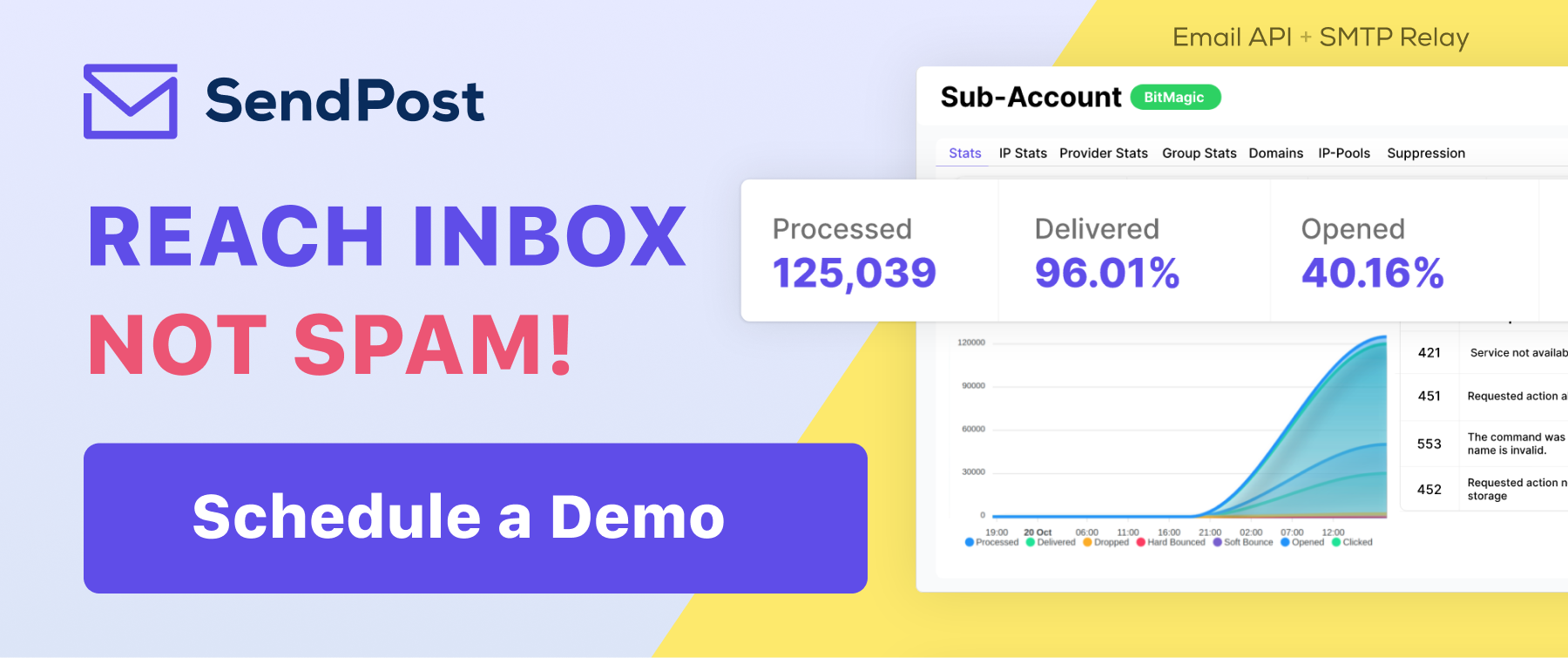
Top 10 Inbox Test Tools
Email clients render messages differently—what looks perfect in Gmail might appear broken in Outlook. Each incorrect rendering, spam filter trigger, or deliverability issue diminishes your campaign’s effectiveness and damages your sender reputation. This is why the smartest companies are using inbox test tools. They help ensure their emails are correctly delivered, displayed, and opened across all email clients/platforms.
Table of Contents
Essential Features of Effective Inbox Testing Tools
When evaluating inbox testing solutions, three core feature categories emerge as critical for ensuring email success: preview testing, technical validation, and analytics capabilities. Let's explore what makes each of these elements essential for your email testing toolkit.
Preview Testing
Preview testing serves as your first line of defense against rendering issues that could compromise your email's effectiveness.
Modern preview testing should offer comprehensive multi-client rendering checks across major email clients like Gmail, Outlook, Apple Mail, and others. This isn't just about basic layout—it extends to mobile responsiveness validation, ensuring your emails adapt seamlessly across devices from smartphones to tablets. With the rising popularity of dark mode, compatibility testing for light and dark themes has become crucial.
Additionally, robust preview testing should verify image rendering, font compatibility, and fallback options. This is how you ensure your message maintains its impact regardless of the recipient's email client settings or preferences.
Technical Validation
Technical validation begins with thorough HTML and CSS code analysis, identifying potential compatibility issues before they affect your campaigns. Link and tracking validation ensures every clickable element works as intended and your analytics tracking remains intact.
Spam filter testing has become increasingly sophisticated, checking your content against major spam filtering algorithms to predict and prevent deliverability issues. Perhaps most crucially, authentication checking verifies your SPF, DKIM, and DMARC records—the trinity of email authentication that protects your sender reputation and helps ensure your messages reach their intended destination.
Analytics and Reporting
The best inbox testing tools don't just identify issues—they provide actionable insights through comprehensive analytics and reporting. Detailed deliverability metrics help you understand exactly how your emails perform across different providers and regions.
Sophisticated spam score analysis breaks down potential triggers that could flag your content, while ongoing performance tracking helps identify trends and patterns in your email delivery success rates. Most importantly, modern testing platforms should offer clear issue identification coupled with practical resolution guidance, transforming raw data into actionable improvements for your email programs.
Top 10 Inbox Testing Tools Compared
Hopefully, we’ve made it clear why you should use inbox test tools. However, we understand choosing the right solution can feel overwhelming.
To help you out, we've analyzed the market's leading contenders for inbox testing, evaluating them based on price, functionality, and real-world application. Below is our comprehensive breakdown of the top 10 inbox testing solutions.
1. Litmus: The Enterprise Standard
Pricing: Starts at $79/month
Standout Feature: Real-time preview testing across 100+ email clients
Main Limitation: Premium pricing may be prohibitive for small businesses
Litmus stands out for its comprehensive testing suite and enterprise-grade capabilities. It offers instant previews across major email clients, automated QA checklists, and sophisticated spam testing. The platform’s Email Guardian provides 24/7 monitoring of email rendering changes.
2. Email on Acid: The Collaboration Champion
Pricing: Starting at $74/month
Standout Feature: Advanced team collaboration tools and approval workflows
Main Limitation: Limited analytics compared to some competitors
Email on Acid excels in team environments, offering robust collaboration features and a customizable pre-deployment checklist. Their platform includes accessibility checking and color contrast validation—crucial for inclusive email campaigns.
3. GlockApps: The Deliverability Detective
Pricing: From $59/month
Standout Feature: Detailed inbox placement reporting across major ISPs
Main Limitation: User interface can be complex for beginners
GlockApps provides deep insights into email deliverability, with real-time spam testing and blacklist monitoring. Their DMARC analytics and IP reputation tracking make it particularly valuable for high-volume senders.
4. Inbox Inspector: The Budget-Friendly Option
Pricing: Free, with premium features available
Standout Feature: Basic preview testing at no cost
Main Limitation: Limited email client coverage
Perfect for small businesses and solopreneurs, Inbox Inspector offers essential testing features without the premium price tag. While it lacks advanced features, it provides reliable basic preview testing across major email clients.
5. SendForensics: The Analytics Powerhouse
Pricing: Starts at $39/month
Standout Feature: Advanced deliverability analytics and scoring system
Main Limitation: Limited preview testing options compared to leaders
SendForensics combines sophisticated analytics with deliverability testing, offering detailed metrics and actionable insights. Their proprietary scoring system helps predict email performance before sending.
6. Mailgun Validate: The List Hygiene Expert
Pricing: Pay-as-you-go options available
Standout Feature: Real-time email validation API
Main Limitation: Focused primarily on address validation rather than content testing
Mailgun Validate excels at maintaining list hygiene, offering real-time verification and risk assessment for email addresses. It’s particularly valuable for preventing hard bounces and protecting sender reputation.
7. Mailjet A/B Testing: The Optimization Specialist
Pricing: Included in premium plans starting at $15/month
Standout Feature: Test up to 10 variants simultaneously
Main Limitation: Limited to A/B testing functionality
Mailjet’s A/B testing capabilities allow marketers to optimize every element of their emails, from subject lines to content blocks. The platform provides detailed performance analytics for data-driven decision-making.
8. Mailtrap: The Developer’s Choice
Pricing: Free plan available, premium from $9/month
Standout Feature: Safe testing environment for development and staging
Main Limitation: Limited preview testing capabilities
Mailtrap provides a secure sandbox environment for testing email functionality during development. It’s particularly valuable for preventing accidental emails to real users during testing.
9. Mailosaur: The Automation Expert
Pricing: Starts at $20/month
Standout Feature: Comprehensive API for automated testing
Main Limitation: Requires technical expertise to maximize value
Mailosaur specializes in automated email testing, offering powerful APIs and integration capabilities. It’s perfect for development teams implementing continuous integration/continuous deployment (CI/CD) workflows.
10. Mail-tester: The Simplicity Champion
Pricing: Free for basic testing
Standout Feature: Instant spam score analysis
Main Limitation: Basic feature set compared to paid solutions
Mail-tester provides quick, straightforward spam testing and basic content analysis. While limited in scope, it offers valuable insights for improving email deliverability at no cost.
Optimizing Your Email Testing Strategy

Creating a robust email testing strategy requires more than just selecting the right inbox test tools—it demands a systematic approach to testing and optimization.
Establishing Testing Cycles
The foundation of an effective email inbox test lies in establishing consistent testing cycles. Rather than treating testing as an afterthought, implement a proactive testing schedule that includes comprehensive checks before every major campaign launch. This means systematically monitoring how your emails render across key email clients, with particular attention to outliers like Outlook that often present unique challenges. For campaigns utilizing dynamic content—such as personalization tokens or conditional content blocks—it's crucial to validate all possible content variations to ensure flawless delivery regardless of recipient segmentation.
Mastering Mobile Optimization
With mobile opens accounting for over 60% of email engagement, mobile optimization deserves special attention in your testing strategy. Begin by thoroughly testing responsive designs across various devices and screen sizes. Pay particular attention to loading times—mobile users often check email on the go, making quick loading crucial for engagement. Interactive elements like buttons and navigation menus require special scrutiny. Ensure they're not just visible but easily clickable on small touch screens.
Tracking Deliverability Performance
Deliverability monitoring represents the quantitative backbone of your testing strategy. Establish baseline metrics for spam scores across major email providers and monitor these scores consistently for any concerning trends. Keep a vigilant eye on authentication status—including SPF, DKIM, and DMARC records—as these technical foundations directly impact deliverability. Regular analysis of bounce rates, broken down by type and recipient domain, can reveal emerging deliverability issues before they become critical problems.
Implementing List Hygiene Protocols
Email list hygiene plays a crucial role in maintaining strong deliverability. Institute a regular schedule for email address validation, removing invalid or high-risk addresses before they can impact your sender reputation. Create a systematic approach to managing inactive subscribers, including re-engagement campaigns and eventual removal of chronically disengaged contacts. Most importantly, establish clear metrics for monitoring engagement patterns—open rates, click-through rates, and conversion tracking—to ensure your list remains healthy and engaged.
The Path Forward
Email inbox testing isn't just about avoiding errors—it's about optimizing every aspect of your email program for maximum impact. Choose the tool that best fits your needs and budget, but remember that testing should be an integral part of your email marketing workflow, not an afterthought.
For organizations sending millions of emails monthly, consider pairing your chosen testing tool with a robust email delivery platform like SendPost. With its sophisticated IP pool management, real-time deliverability monitoring, and advanced analytics, SendPost complements inbox testing tools by providing enterprise-grade sending infrastructure. Its unique capabilities in managing multiple sending domains, automated deliverability alerts, and proactive reputation monitoring make it particularly valuable for high-volume senders who need to maintain consistent delivery rates at scale.
SendPost's standout features include:
- Automated incident creation for blacklist monitoring
- Advanced IP routing based on domain or email volume
- Real-time deliverability analytics across major ISPs
- Smart throttling and backoff strategies
- Detailed SMTP error tracking and resolution
The combination of thorough inbox testing and SendPost's delivery optimization creates a comprehensive email reliability system. While testing tools help ensure your emails look and function perfectly, SendPost ensures they actually reach their destination—maintaining high deliverability rates even at enterprise scale.

Test before you send—try these inbox testing tools and boost your open rates today. Then supercharge your delivery infrastructure with SendPost to create an unbeatable email marketing system that delivers results consistently. Click here to schedule a demo of SendPost!



